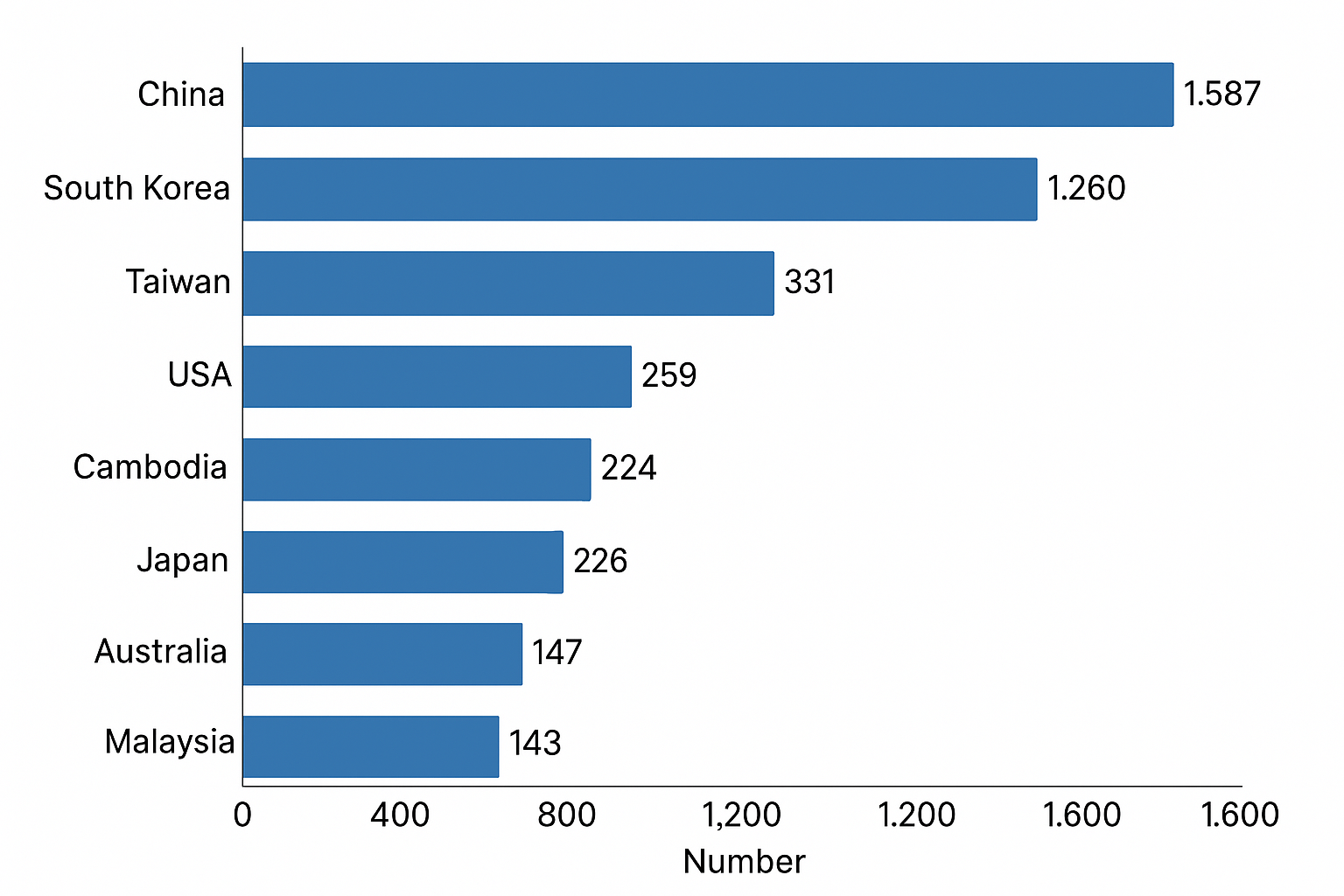According to figures released on April 6 by the National Statistics Office (NSO), Vietnam welcomed over 2.05 million foreign tourists in March 2025, a 29 per cent increase compared to the same period last year, thus bringing the total international arrivals in the first quarter of 2025 to a new quarterly record of 6 million.
Fuelled by key markets
In the first quarter, Vietnam welcomed 1.6 million Chinese visitors, the highest number among all foreign tourist arrivals, a year-on-year rise of 78.3 per cent, followed by South Korea with 1.3 million. The data from the NSO also highlighted steady inflows from familiar markets such as Taiwan, Japan, Cambodia, India, the United States, and Australia.

Tourist arrivals from key international markets all showed promising growth. These included Japan ( 26.3 per cent), India ( 23.3 per cent), the United States ( 11.3 per cent), Australia ( 11.0 per cent), Taiwan ( 10.2 per cent), and South Korea ( 2.2 per cent).
Meanwhile, Southeast Asian markets also performed well, with Cambodia surging by 105.6 per cent, the Philippines by 95.1 per cent, Laos by 52.7 per cent, Indonesia by 6.9 per cent, and Thailand by 4.7 per cent.
Tourists from European countries continued their upward momentum, in which Russia led the growth with an impressive 110.5 per cent increase, followed by the United Kingdom ( 23.5 per cent), France ( 28.3 per cent) and Germany ( 23.3 per cent).
Following the Government's Resolution No. 11/NQ-CP, dated January 15, 2025, on visa exemption for citizens of Poland, Czech Republic, and Switzerland, tourist arrivals from Poland and Switzerland recorded encouraging year-on-year growth of 52.9 per cent and 14.1 per cent, respectively.
Tourism revenue rises
According to data from the NSO, revenue from travel and tourism services in Q1 2025 was estimated at VND21.5 trillion ($860 million), marking an 18.3 per cent year-on-year increase. Several localities saw particularly strong tourism performance, in which Hanoi grew the most with an increase of 23.5 per cent, followed by Da Nang ( 22.1 per cent) and Quang Ninh ( 20.9 per cent).
Mr. Tran Trung Hieu, Deputy Director of the Hanoi Department of Tourism, emphasized that expanding the visa exemption list and extending the permitted temporary stay are important measures with broad economic implications. “This not only strengthens the tourism sector but also supports related industries such as hospitality, food and beverage, and entertainment,” Mr. Hieu shared.
The surge in international and domestic arrivals affirms the effectiveness of Vietnam’s tourism stimulus initiatives, laying a strong foundation for the country to meet its 2025 targets of welcoming 22 to 23 million foreign visitors.
From opportunity to global spotlight
In the context of fierce competition among Southeast Asian countries regarding visa policies and tourism programs, Vietnam should continue to implement comprehensive and synchronized solutions in order not to miss the “golden” opportunity of reaching a tourism revenue of over VND1 quadrillion ($40 billion) in 2025.
According to reports by domestic and international tourism research organizations, Vietnam has several strongly appealing destinations to make the country one of the most searched-for globally and should seize this opportunity to enhance promotion and marketing efforts, especially in potential and emerging markets.
Localities have identified tourism as a spearhead industry that needs to develop professional tourism branding strategies, diversify tourism products, and improve service quality in restaurants and accommodation facilities. In addition, the quality of tourism services and human resources also needs to be elevated through in-depth training in professional skills to communicate fluently with foreign visitors and provide service at higher standards with greater professionalism.
Technology in tourism should also be considered to apply by developing smart tourism applications that integrate information, hotel bookings, transportation, and customer support for a faster and more convenient experience.
Vietnam is now facing a great opportunity to elevate its status on the global tourism map. By addressing the need for open and rational visa policies, upgraded infrastructure, and innovative tourism products and services, the country can truly attract more foreign tourists and encourage repeat travel, moving beyond the label of a “low-cost destination.”









 Google translate
Google translate